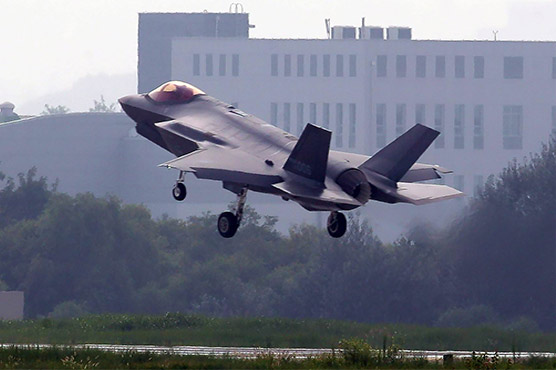German radar tracks two US F-35 stealth jets

German defense contractor claims it tracked two Joint Strike Fighters with new type of radar system.
GERMANY (Web Desk) - The German radar-maker Hensoldt has claimed that it managed to track two US stealth fighter jets F-35 from a pony farm for almost 100 miles (about 150 kilometres) during an air show
A German defense contractor claims it tracked two F-35 Joint Strike Fighters with a new type of radar system. Hensoldt says it tracked the new American jets for nearly 100 miles. While a considerable feat, that doesn’t mean the $92 million fighter jet’s stealth features are obsolete. At least, not yet.
Traditional radars broadcast radio waves and then study the waves that reflect off flying objects. This allows the radar operator to gauge information such as an aircraft or missile’s speed, altitude, and direction. Radar can then be used to send fighters to intercept an incoming aircraft or launch surface to air missiles. Stealth aircraft like the American F-35 and Chinese J-20 fighters are carefully shaped to minimize the return a radar will get from the aircraft, greatly reducing its detection range.
Stealth has proven extremely effective in allowing aircraft to bypass radar defenses, enhancing their survivability, and the U.S. has poured hundreds of billions into studying stealth and developing stealthy aircraft. Stealth is considered so vital to aircraft survival that the U.S. Air Force will probably never buy another non-stealthy fighter jet.
An article at C4ISRNet reports that Hensoldt developed a new passive radar system, called TwInvis. TwInvis works by studying electromagnetic emissions in the atmosphere, think radio station signals, TV signals, cell phone tower signals, commercial radars, and so on. The system can detect aircraft moving through this invisible sea of signals by “reading how the signals bounce off airborne objects.”
C4ISRNet reports that two U.S. Air Force F-35As visited Germany in 2018 to participate in the Berlin Air Show. Hensoldt set up a TwInvis radar system at the air show...but the F-35s never took off. However, the company did also set up one of the radar sets downrange of the airport and caught the planes taking off, tracking them for 150 kilometers (93 miles).
For now, TwInvis is only really useful as an early warning radar, warning defenders of a stealth fighter’s approach. TwInvis’ radar is not sophisticated enough, at least not yet, to guide radar-guided missiles. But the article notes it could provide enough location data for an infrared guided missile (like the AIM-9X Sidewinder) to search for a target’s hot engine exhaust.
The technology sounds promising, but there were a number of factors that helped TwInvis detect the F-35s. One, they knew when the F-35s were coming and were able to use the signals from the jets’ ADS-B transponders to help identify the aircraft. In wartime, adversaries will not know the planes are coming and ADS-B emitters will be turned off.
Another issue with the radar is something fundamental to its method of operation: it relies on signals from civilian transmitters to detect stealth aircraft. In many parts of the world, especially over open water or remote regions on land, there won’t be many signals to collect data from. A country with stealth aircraft could disable cell phone networks with cyberattacks and bomb radio broadcasting towers to deny radars like TwInvis a detection medium.
TwInvis could be part of a package of complementary systems designed to help detect stealth aircraft. It is also apparently the only system that can detect the F-35 at 93 miles—it would be a mistake to rule it out just yet. As the radar develops and operators refine their tactics, it could become even more effective.
Stealth aircraft remain far from obsolete. The German aircraft radar imposes costs on the defender, forcing adversaries to buy expensive passive radar systems. It will be a long time before all countries have passive radars. In the duel of stealth versus counter-stealth, TwInvis is a shot off the bow—but the duel is far from over.


